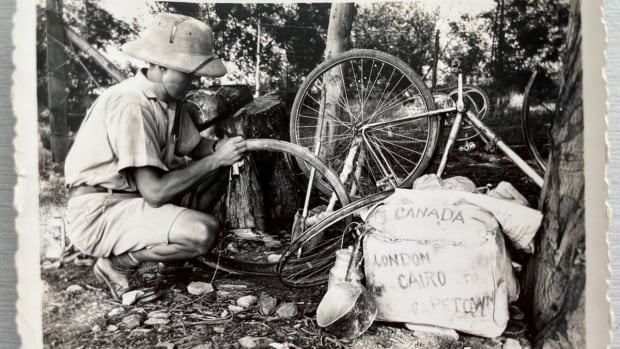
If you’re a cyclist looking for inspiration this summer, try looking back in time to the 1930s when the world was different, as were the bicycles.
Ingersoll, Ont., shoe salesman Douglas Carr was in his mid-20s when he booked a ticket on a transatlantic steamship to London, England, to watch the coronation of King George VI in 1937. Carr then went on an incredible journey around the world — largely completed by bicycle, much to the delight of modern-day thrill seekers.
“So he thought, ‘I’m this far from home. I’ll do some sightseeing.’ So he bought a bicycle,” said Scott Gillies, curator at the Ingersoll Cheese and Agricultural Museum, who knew Carr in his later years when he owned a local bookshop.
Carr then cycled around Great Britain and Europe, and ventured as far as Denmark and Sweden, said Gillies.
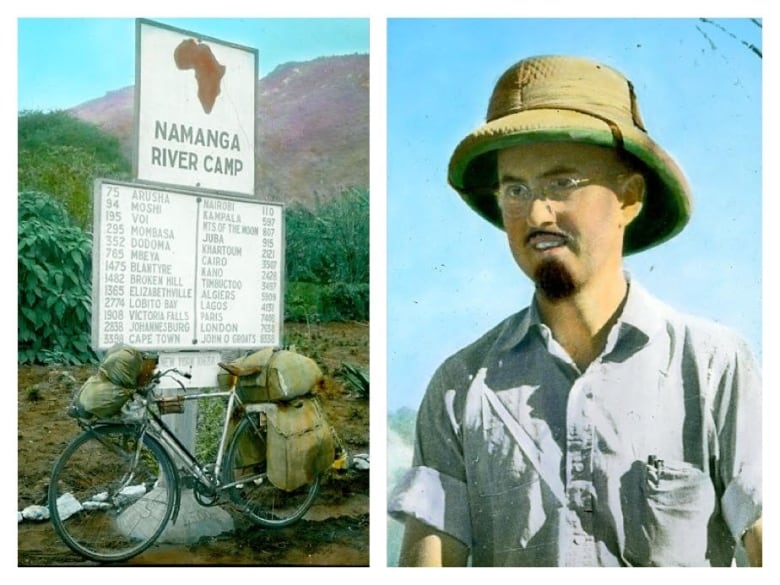
In Rome, Carr got a new three-speed bicycle, regrouped and then cycled all the way to the tip of Africa.
“Douglas Carr was a pretty amazing individual,” said Sean Smith, Archives of Ontario’s curator.
“If you look at the map of where he travelled, a lot of these places don’t exist anymore,” said Smith. “The names on the map have changed considerably. What’s amazing is just to think about the fragility of the world at the time during which he was travelling.”
All I can imagine is that he got the travel bug and one thing led to another and clearly he must have had some some success and some good experiences to keep him going.– Scott Smith, Archives of Ontario
Smith documented his journey meticulously in journals and photographs.
“We’re fortunate here at the Archives of Ontario to have all of the journals that he maintained during his two years of travel around the world,” said Smith. “Those equate to over 4,000 pages of of written records, his reflections, his experiences.
“He also kept a series of photographs and he worked with them when he got back. He numbered them, he put them in a sequence. He had a presentation called 30 Moons Around the World that he delivered largely in support of the Canadian Cancer Society.”
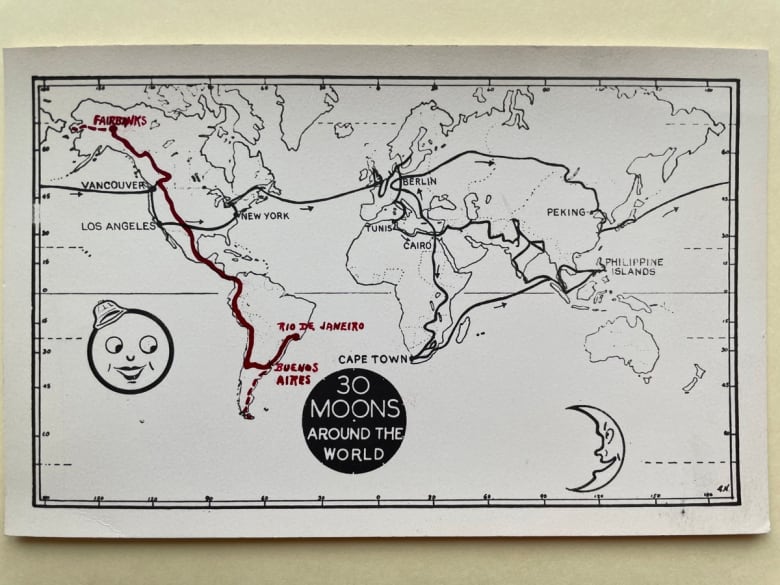
Bicycle on display
After finishing his ride through Africa, Carr set his sights on India.
“All I can imagine is that he got the travel bug and one thing led to another,” said Smith. “Clearly he must have had some some success and some good experiences to keep him going.”
“When he left Cape Town, he left the bicycle in the care of a shopkeeper who promised to ship it back to Ingersoll,” noted Gillies.
Carr then worked on a ship, which took him to Southeast Asia and eventually India. By then, he was travelling by public transit, said Gillies.
He said that because the Second World War slowed or stopped all non-essential shipping, it would take some time for Carr’s bike to make it to Ingersoll.
In fact, Carr had returned home, joined the Royal Canadian Air Force and went back to Europe to serve in the war before his bicycle made it to Ingersoll.
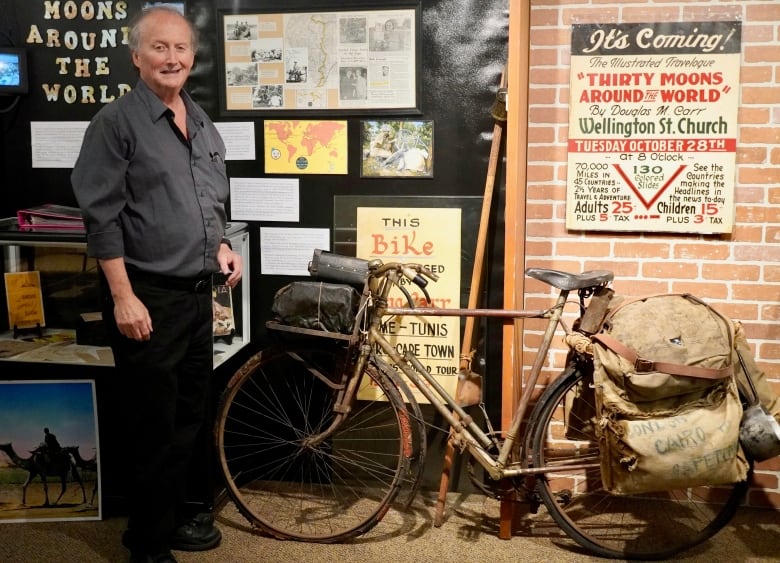
“In 1949, he gets a letter in Ingersoll from South Africa to say, ‘Your bicycle is on its way,’ said Gillies. “This shopkeeper had sat on the bicycle, tucked it away in his attic, for 10, 11 years and still honoured the agreement to return this bicycle to Doug Carr.”
After Carr died in 1994, his family donated the bicycle to the Ingersoll Cheese and Agricultural Museum, where it remains on display.
“We’ve got the original bicycle with the original saddle bags that were custom made for it in Cairo,” said Gillies. “The little carrier on the front handlebars, the hand brakes, the original bicycle pump is all still part of the bike.”
It was in rough shape when they got it, he said. “The tires had 21 patches on each wheel. It was just worn out from cycling through Africa.”
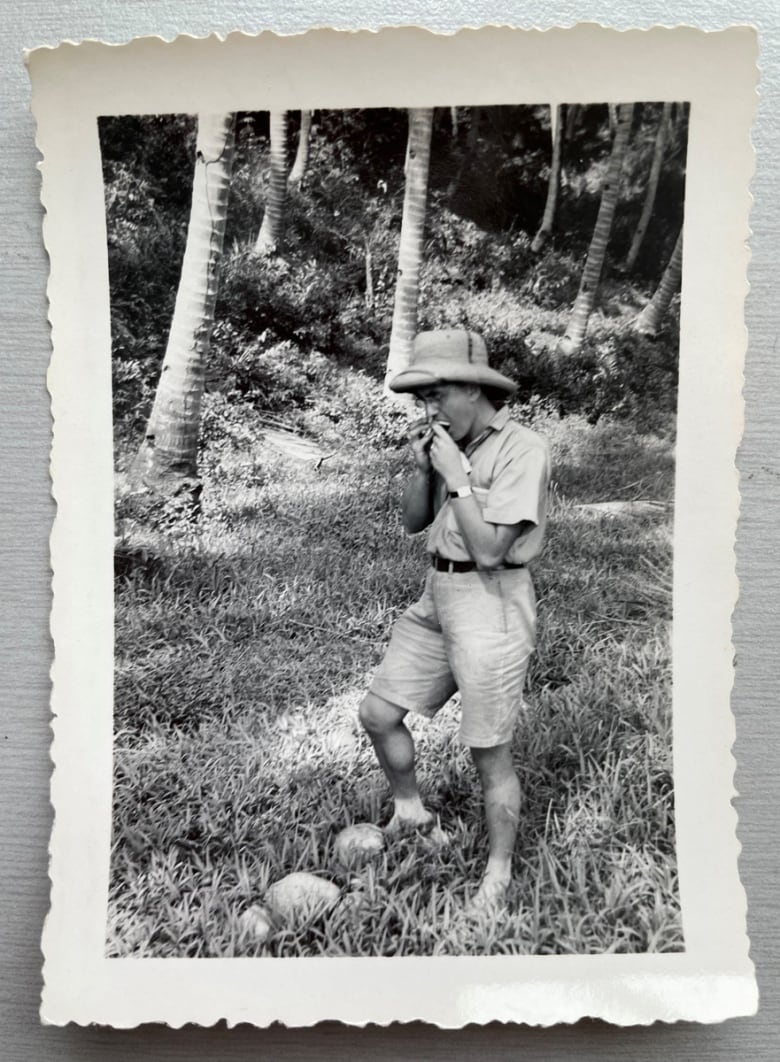
London Morning6:50Douglas Carr’s cycling journey around the globe
London Morning host Rebecca Zandbergen spoke with Sean Smith with the Archives of Ontario about Douglas Carr’s cycling legacy. Carr’s bike — the same one he rode around the world — is on display at the Ingersoll Cheese and Agricultural Museum.